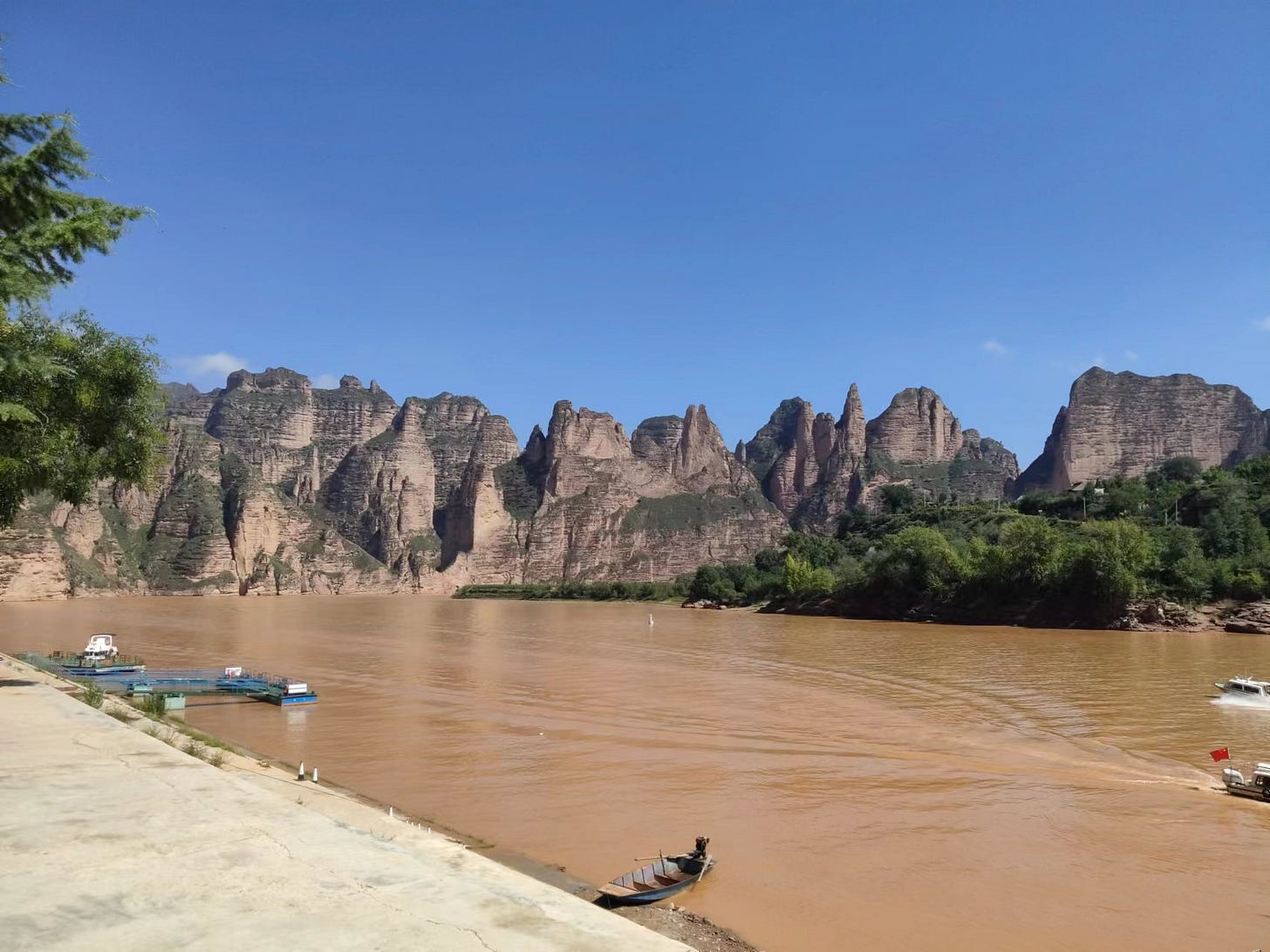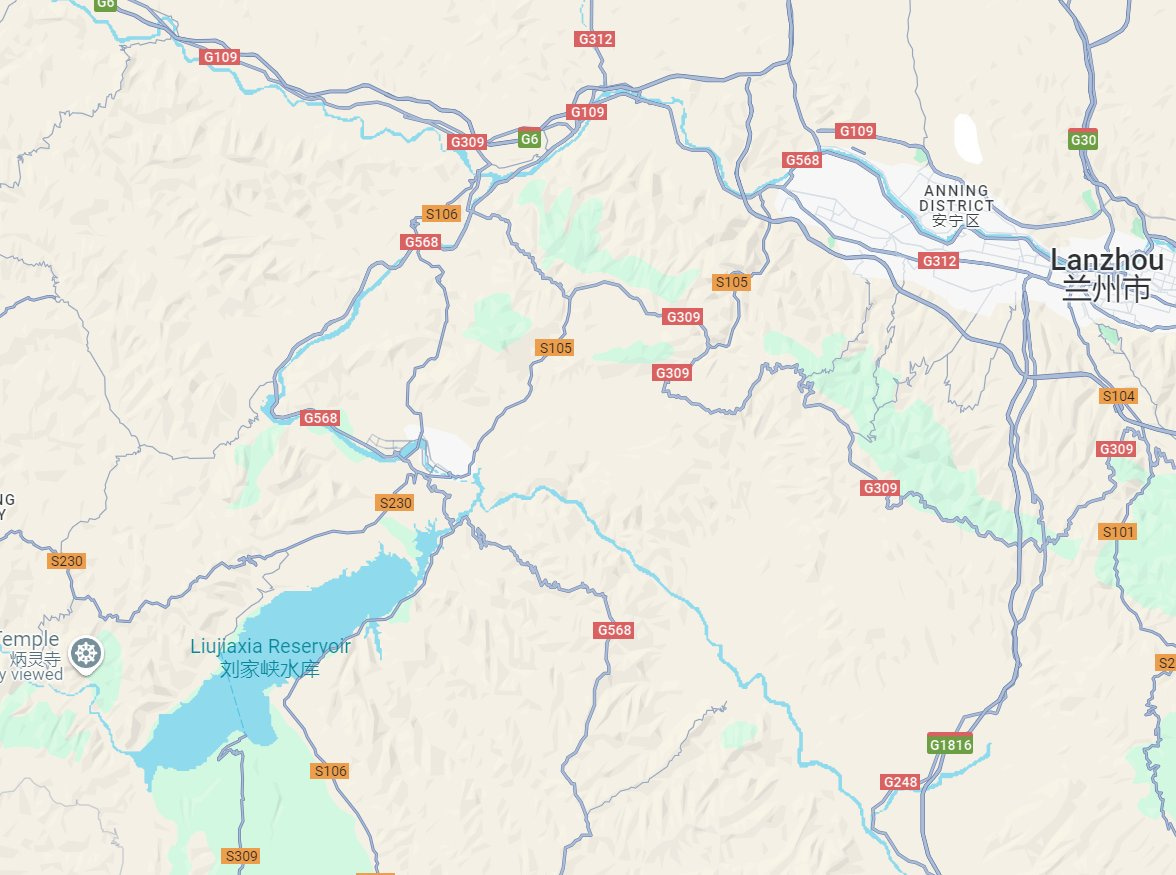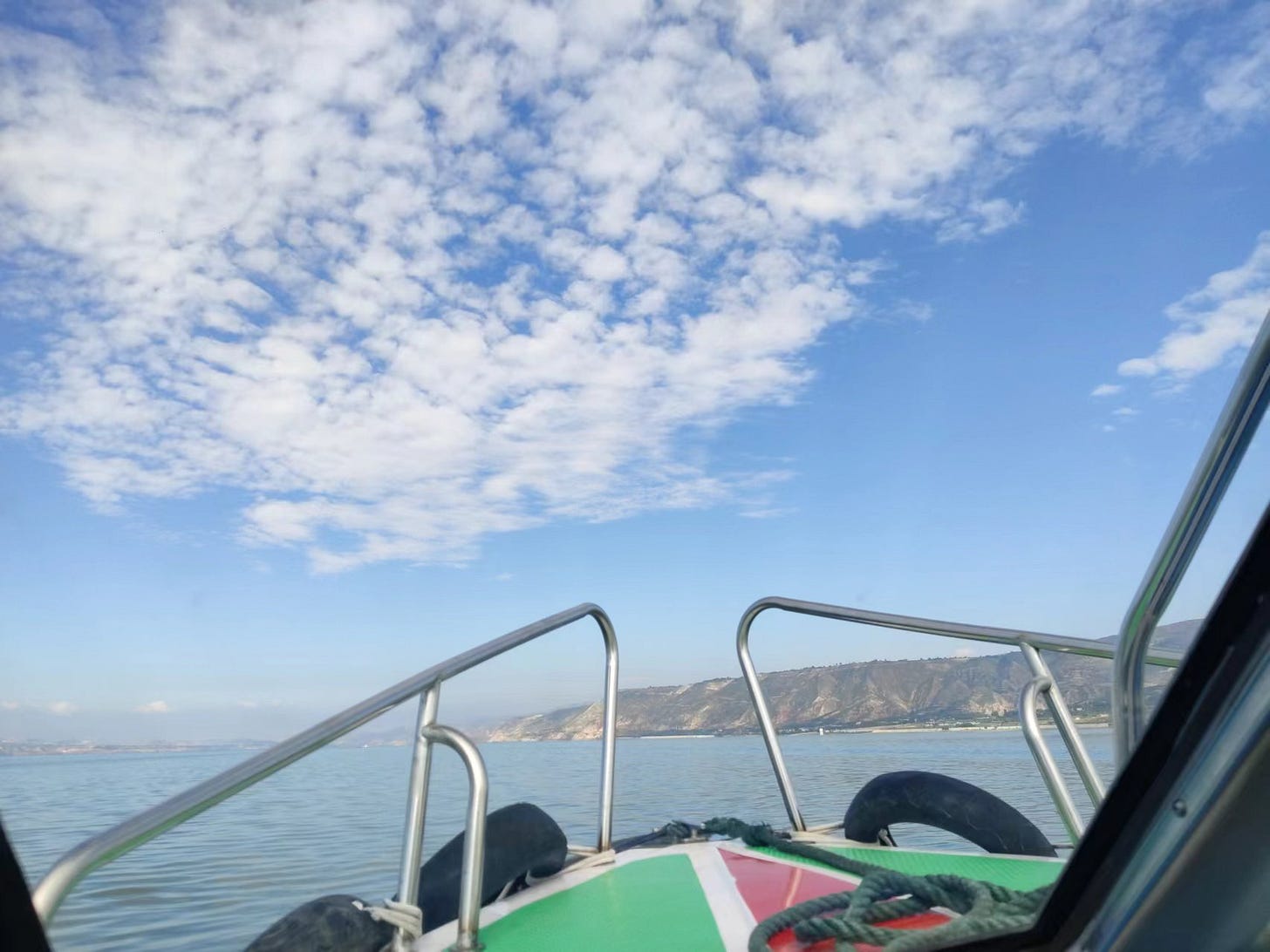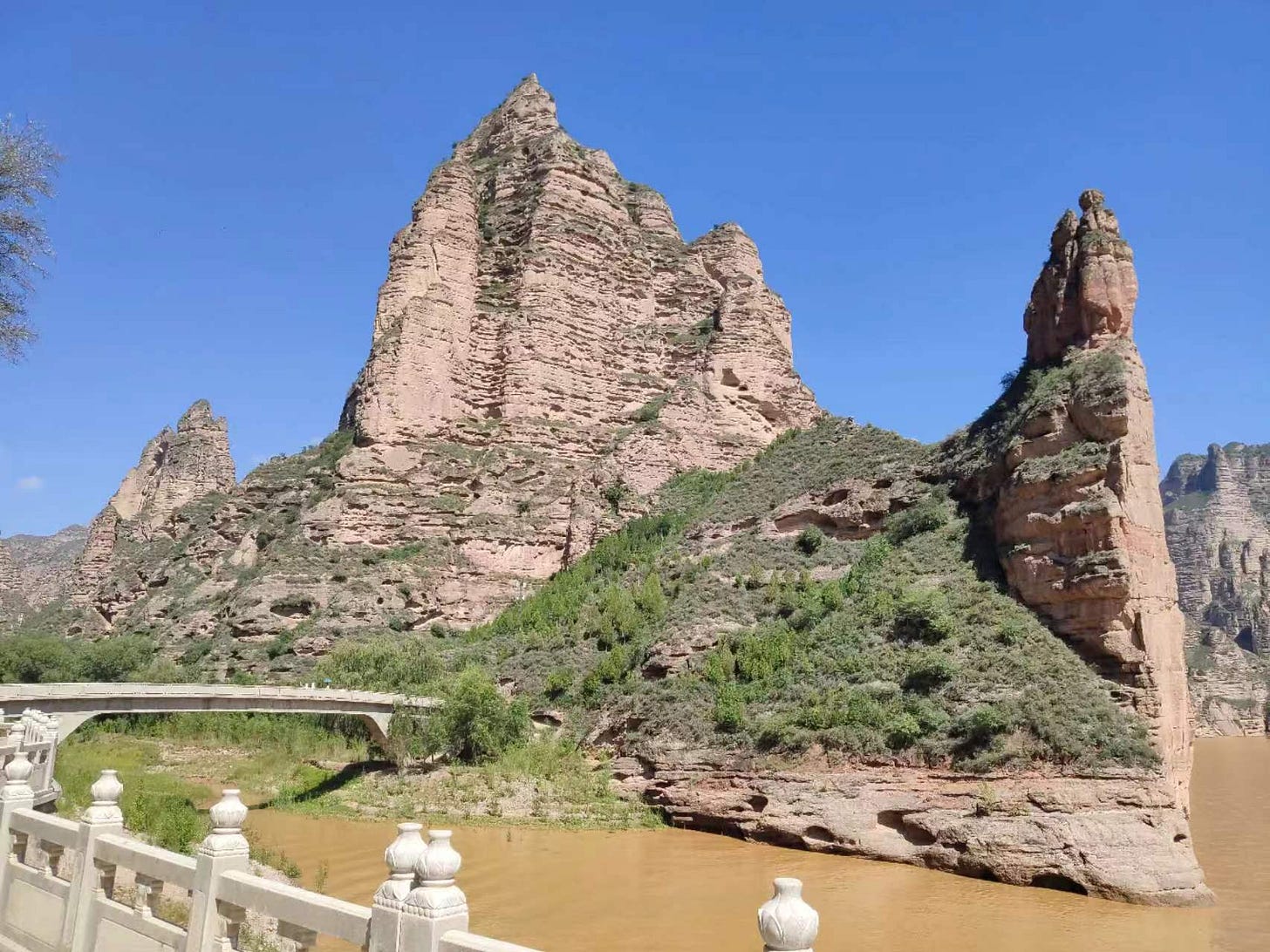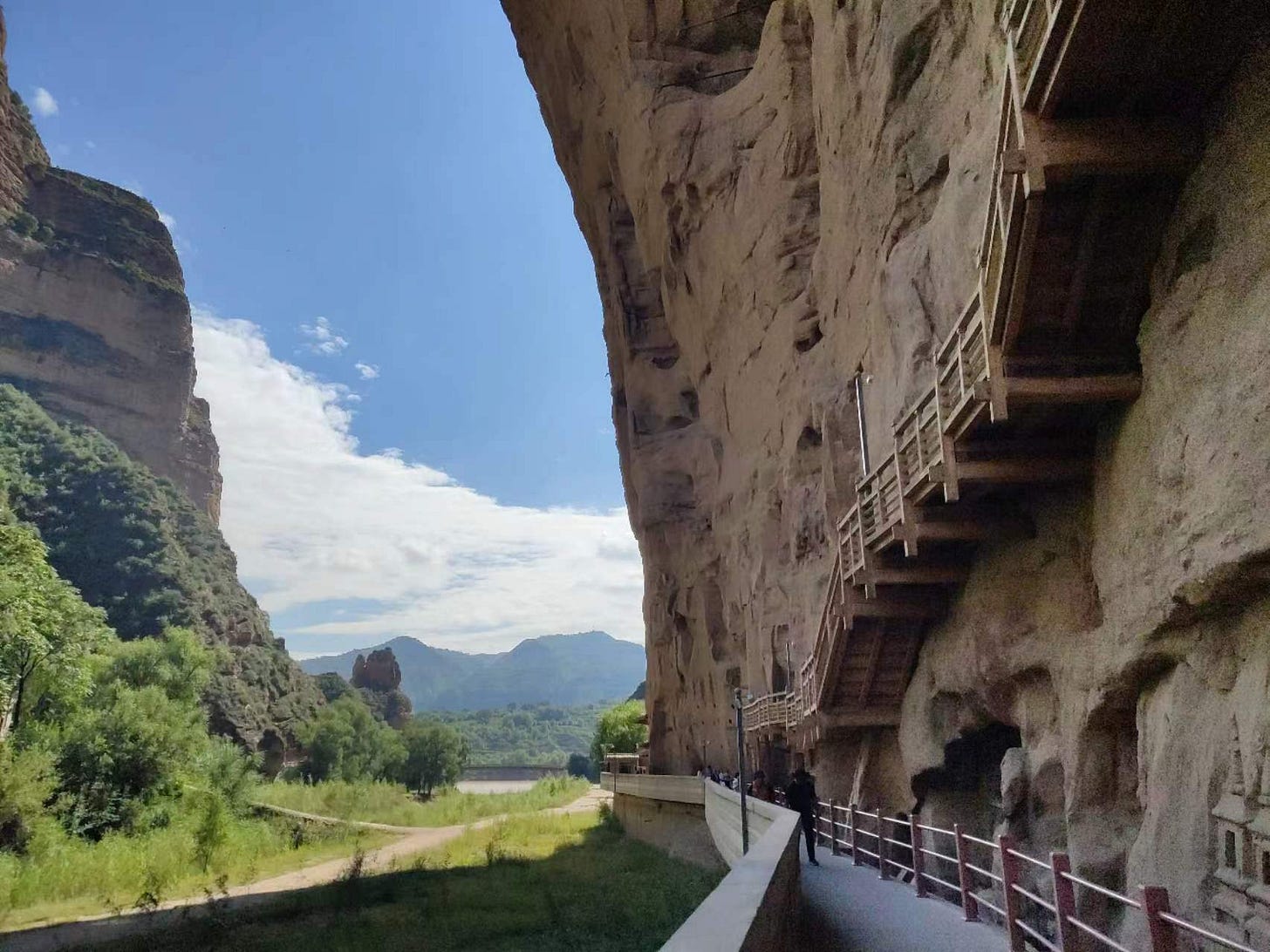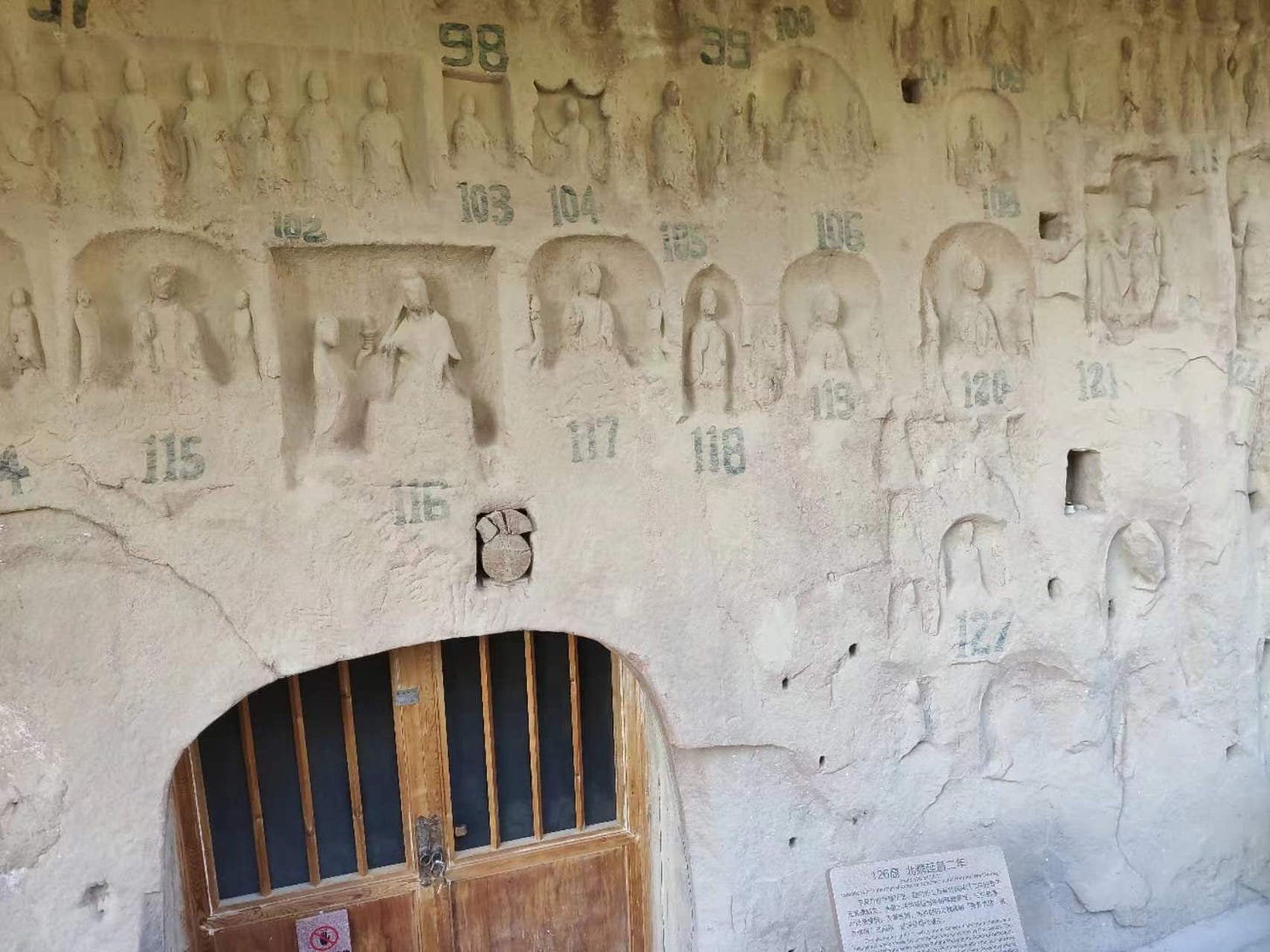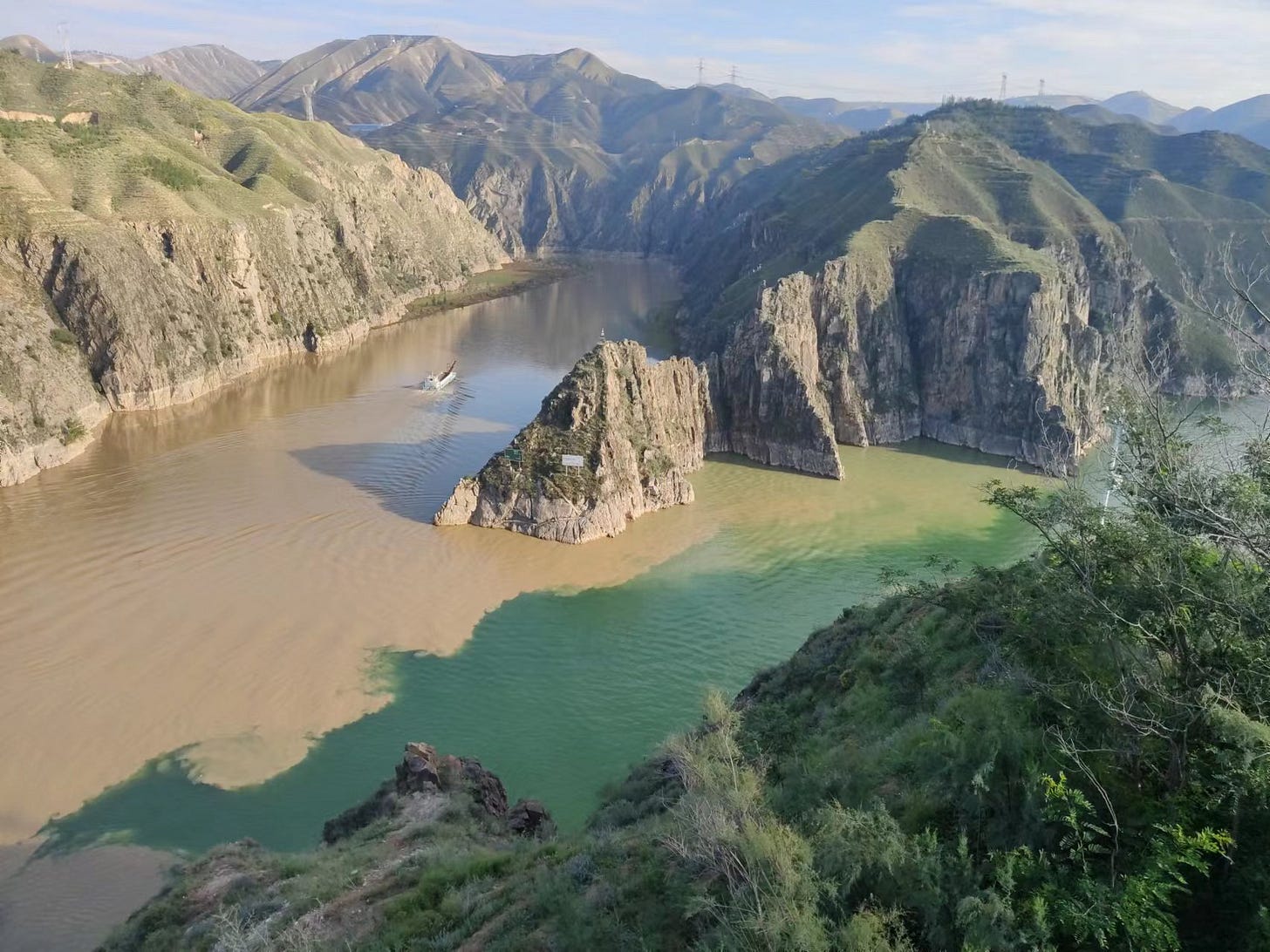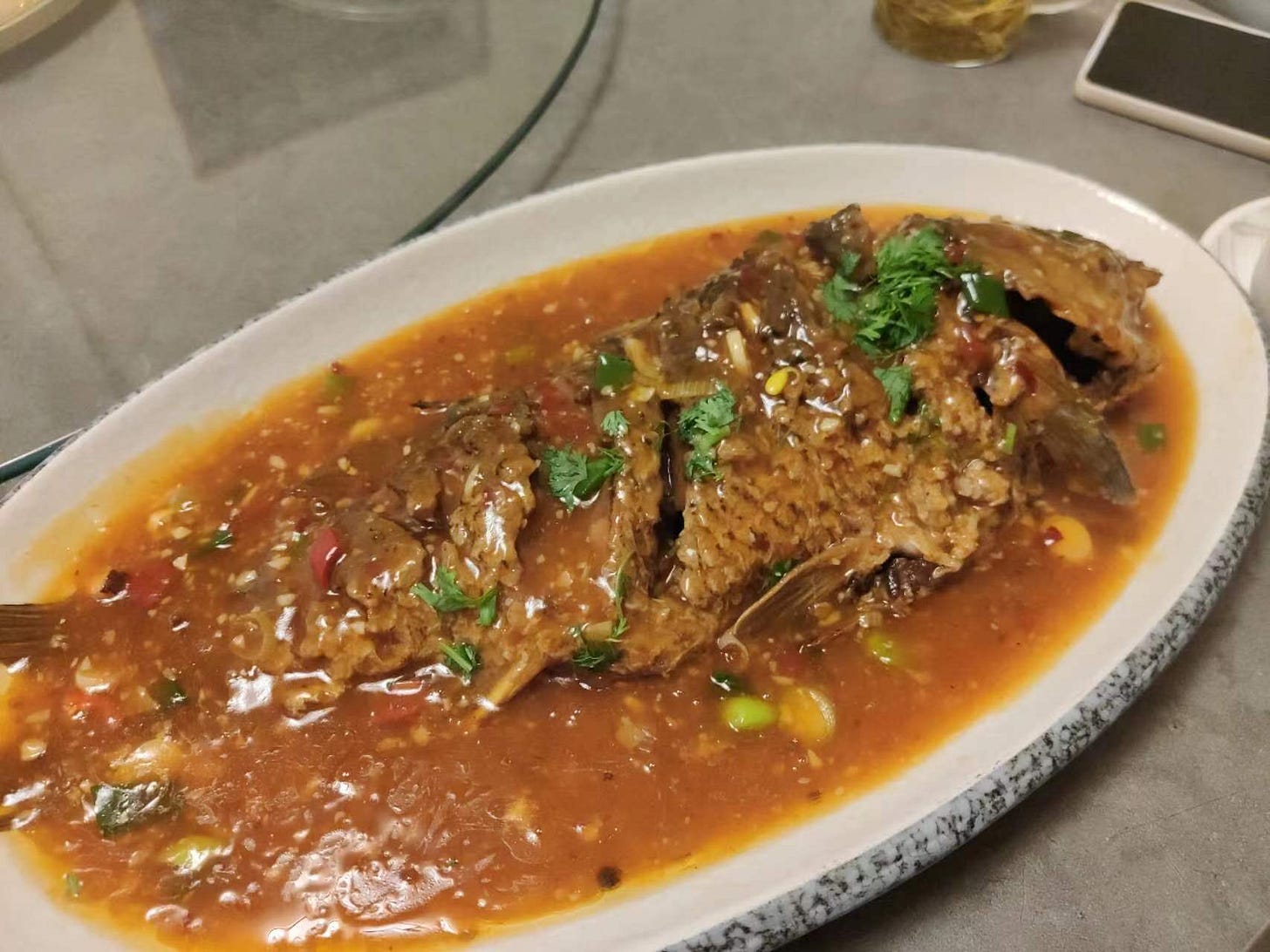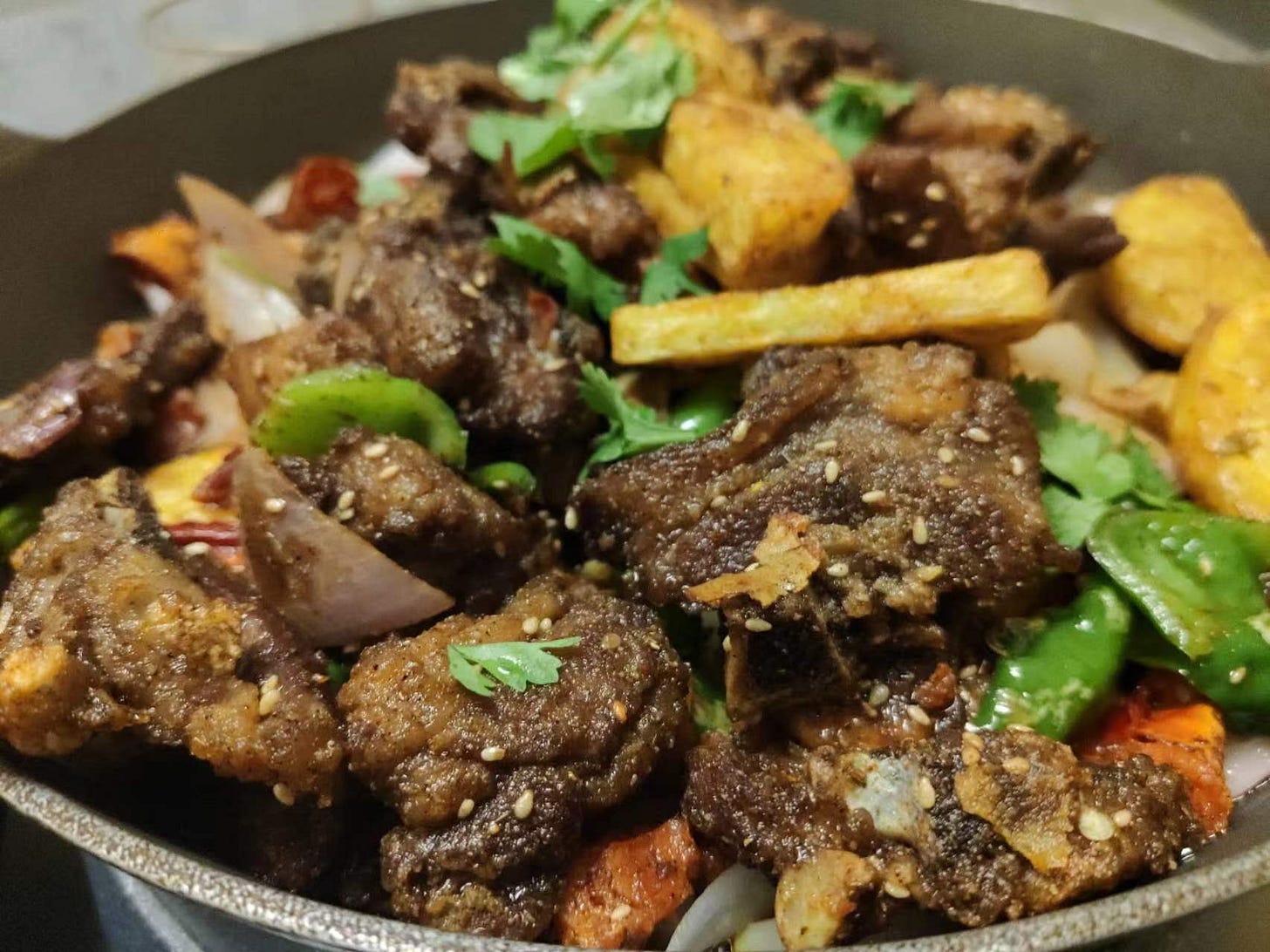Gansu Travelogue 1: Tracing Back the Vicious Yellow River
My first meeting with China's mother river in Gansu
This is a repost of an essay first shared to Twitter on September 15, 2024, detailing my 2024 travels through southern Gansu and into northern Sichuan. Along the way, we visited Lanzhou, Linxia, Gannan, and Jiuzhaigou, before driving down to Chengdu. This first post is more like a traditional travel blog than my usual social ethnography content, because I didn’t get a chance to interview anyone while on the reservoir tour, but I’ll go on to have some amazing conversations on this trip, especially after arriving in the Tibetan regions of Gansu and Sichuan.
The Yellow River gets its name from the huge volume of eroded loess sediment it carries, giving the river a permanent muddy look, common to all rivers passing through northwest China. Despite its alarming appearance, the water isn’t actually particularly polluted…it’s just muddy. Silty, specifically.
The Yellow River is China's "mother river". But as mothers go, it is a particularly vicious and spiteful one. The floods of the Yellow River are ranked right up there with drought-related famines and the the Black Plague for the most deadly natural disasters in history. When you search for “Yellow River flood”, Wikipedia wants to know which of approximately 20 events you might be talking about…all of them bad.
When the Yellow River floods, it obliterates entire counties, drowns tens of thousands, wipes out hundreds of thousands more via disease and famine-induced starvation, inspires rebellions, and topples dynasties. During the Japanese invasion of China in WW2, intentional flooding of the river was used to devastating effect, blocking troop movements and creating economic and geographic damage so severe that the effects on the region can still be traced today. The Yellow River is a nasty, fickle, scary mother.
Like China’s other famous river, the Yangtze, the Yellow arises in Western China on the Tibetan Plateau, in modern Qinghai Province. Its watershed directly or indirectly irrigates pretty much all of north-central China, flowing from Qinghai to Gansu, Ningxia, Inner Mongolia, Shanxi, Shaanxi, Henan, and Shandong before finally dumping into the Bohai Bay. This is just the river’s modern path. Its many floods have caused major course changes several times over the centuries.
In the 1950s, the Yellow River was dammed at Liujia Town, Yongjing County, west of Lanzhou, part of Linxia City now. At the time, it was the largest hydro dam in China.
The huge Liujiaxia Reservoir (刘家峡水库) formed behind the dam offers a rare sight of the the Yellow River's waters at rest. Once the silt settles, the water is clear and clean. After leaving Lanzhou, Liujiaxia Reservoir was my first stop on my great Gansu tour.
The main thing I wanted to see here was the Buddhist grottoes at Bingling Temple (炳灵寺). To visit the grottoes, the fastest way is a 1hr speedboat across the reservoir.
The area around Bingling Temple is full of interesting karst landforms, making for striking photos. This is a 5A tourist attraction, and it reminded me of some of the sights you might see in the US National Parks in e.g., Utah or Arizona.
The grottoes are carved into the side of a huge cliff rising starkly along the riverbank, accessed by a narrow strip of land under the cliff face.
The oldest grotto carvings at Bingling date back to the Sixteen Kingdoms period (AD 304-409), when this region was part of the Western Qin Dynasty. However the most productive periods were during Northern Wei (AD 386-535) and Tang (AD 618-907). Bingling is not even considered one of the “4 Great Buddhist Grottoes” of China (i.e., Mogao, Yugang, Longmen, and Maijishan) but it was still pretty impressive.
I recommend paying extra for one of the site guides, else you'll miss many details.
The biggest attraction here (literally) is the 27m tall Great Maitreya Buddha statue, occupying a huge section of the cliffside, with many small grottoes surrounding it.
The upstairs gallery requires a separate ticket and is supposedly amazing, but also pricey. Pictures are not allowed so we'll just have to imagine how splendid it is.
After finishing with the grottoes, we took the speedboat back the pier and set off to find the other trendy tourist attraction in this area: the lookout point above the exit of the reservoir. Here, we see where the clear Yellow River waters exiting the reservoir meet the silty waters of the Tao River (洮河), one of its many tributaries.
Their meeting point is striking, like a chemical spill merging with a clear stream.
Once the Tao River joins with the Yellow at the reservoir mouth, the whole river turns yellow and silty again. It will then flow 60km northeast to Lanzhou, followed by another 3600 kilometers of spiteful zig-zagging across half of northern China before its silty, life-giving Tibetan glacial runoff is finally reunited with the ocean.
Unlike the Yangtze River, the Yellow River is not particularly known for its aquaculture. One of the few fish that can tolerate the silty waters, however, is the Yellow River carp (黄河鲤鱼). It was the star dish for dinner that evening, when we ate at a "farmer table restaurant" (农家乐) in Liujia Town before departing for Linxia City.
It was delicious, but full of annoying tiny bones, like most river fish in China. Dine with caution…getting one stuck in your throat can sometimes mean a trip to the ER!
This is the first post of what will be a small series crossing southern Gansu's Muslim & Tibetan regions, braving the Sichuan mountains at Zoigê, visiting famous Jiuzhaigou, and ending in Chengdu. Next stop: China’s “Little Mecca”: Linxia City.
This trip had some of the most beautiful scenery I've ever seen - not just in China, but anywhere I’ve ever been. I’ll end here with a preview of what is to come:

